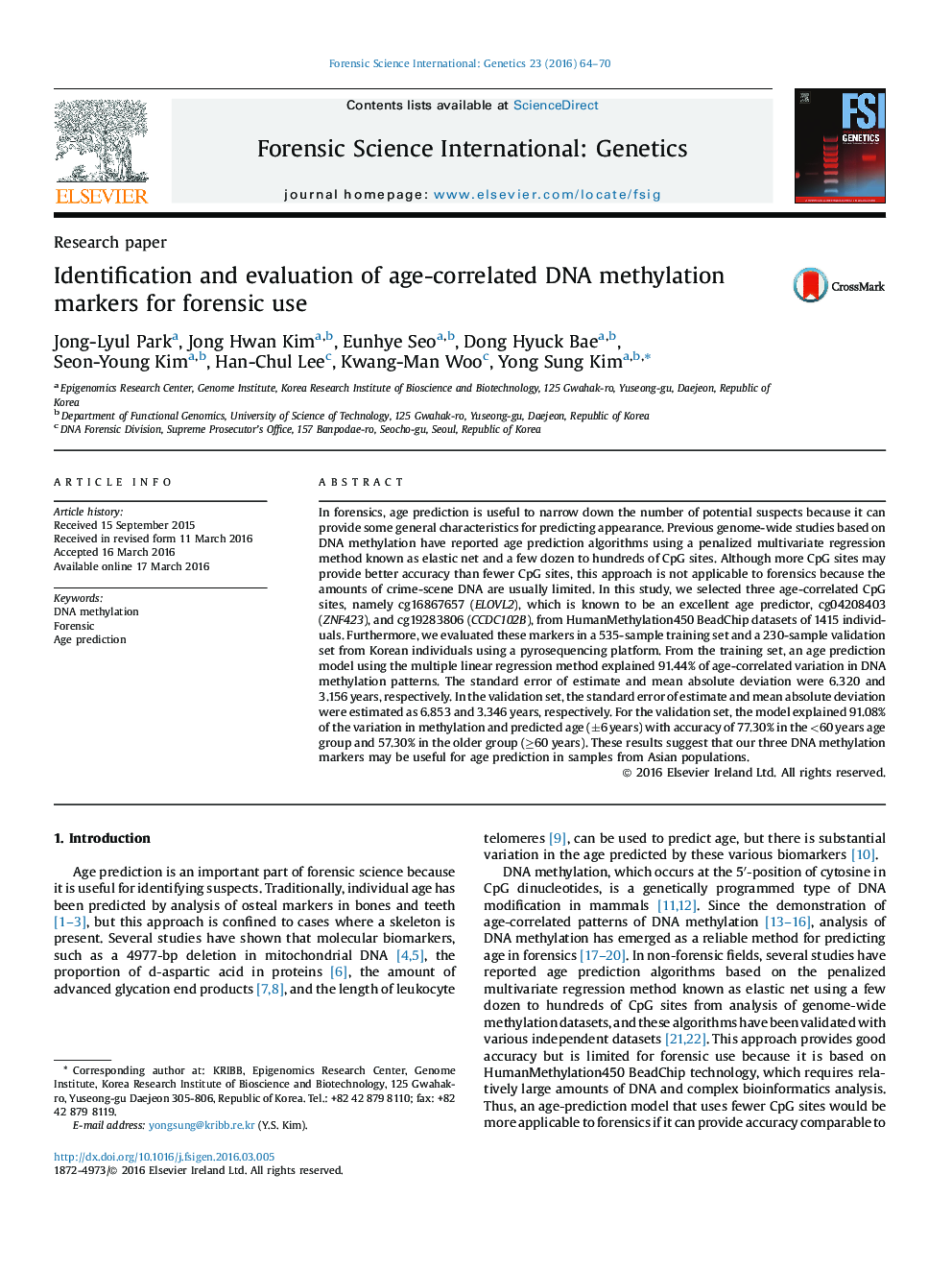| Article ID | Journal | Published Year | Pages | File Type |
|---|---|---|---|---|
| 6553550 | Forensic Science International: Genetics | 2016 | 7 Pages |
Abstract
In forensics, age prediction is useful to narrow down the number of potential suspects because it can provide some general characteristics for predicting appearance. Previous genome-wide studies based on DNA methylation have reported age prediction algorithms using a penalized multivariate regression method known as elastic net and a few dozen to hundreds of CpG sites. Although more CpG sites may provide better accuracy than fewer CpG sites, this approach is not applicable to forensics because the amounts of crime-scene DNA are usually limited. In this study, we selected three age-correlated CpG sites, namely cg16867657 (ELOVL2), which is known to be an excellent age predictor, cg04208403 (ZNF423), and cg19283806 (CCDC102B), from HumanMethylation450 BeadChip datasets of 1415 individuals. Furthermore, we evaluated these markers in a 535-sample training set and a 230-sample validation set from Korean individuals using a pyrosequencing platform. From the training set, an age prediction model using the multiple linear regression method explained 91.44% of age-correlated variation in DNA methylation patterns. The standard error of estimate and mean absolute deviation were 6.320 and 3.156 years, respectively. In the validation set, the standard error of estimate and mean absolute deviation were estimated as 6.853 and 3.346 years, respectively. For the validation set, the model explained 91.08% of the variation in methylation and predicted age (±6 years) with accuracy of 77.30% in the <60 years age group and 57.30% in the older group (â¥60 years). These results suggest that our three DNA methylation markers may be useful for age prediction in samples from Asian populations.
Related Topics
Life Sciences
Biochemistry, Genetics and Molecular Biology
Genetics
Authors
Jong-Lyul Park, Jong Hwan Kim, Eunhye Seo, Dong Hyuck Bae, Seon-Young Kim, Han-Chul Lee, Kwang-Man Woo, Yong Sung Kim,
